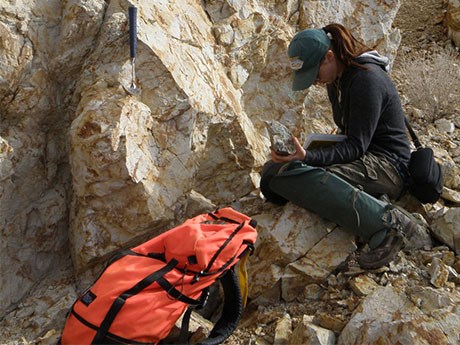It’s a grim market reality for mineral explorers trying to raise capital for their projects.
But there’s one tool available to help prospectors at the grassroots levels with their costs in working their claims. The Ontario Exploration Corporation (OEC) is a for-profit entity overseen by the Ontario Prospectors Association that allows successful applicants to access as much as $85,000 to fund their work.
The OEC was established in 2002 to invest in mining lands with high economic potential.
The three-phase program delivers financial assistance in exchange for a royalty on the lands, up to a 1.5 per cent net smelter return, which prospectors can buy back up to 11 years after receiving the funds. The net smelter return (NSR) refers to revenues expected from the mill feed, taking into consideration mill recoveries, transport costs of the concentrate to the smelter, treatment and refining charges, and other deductions at the smelter.
That hitch isn’t always popular in the prospecting community, said Garry Clark, executive director of the Ontario Prospectors Association (OPA), who admits the program is underutilized.
“Prospectors don’t like giving up the NSR,” said Clark, “but the chances of you making money on the NSR are so slim that you may as well give it up if it means free money. It’s all negotiable. You can buy the whole thing back.”
In 1999, when the Ontario government got out of the Ontario Prospectors Assistance Program, the OPA lobbied the Northern Ontario Heritage Fund for onetime funding of $2.8 million that would set up a corporation based on giving prospectors loans, which would be underpinned by a one per cent net smelter royalty.
The first phase of the program provides up to $10,000 for successful applicants, half of which is given up front. The rest is released after the prospector files his assessment report with the Ministry of Northern Development and Mines.
The money is often earmarked for sampling, mapping and assays, “stuff prospectors can’t afford themselves.”
It can also be used for room and board, and gas expenses.
“The only thing we say with the money is you can’t pay yourself,” said Clark. The OEC takes a one per cent NSR on the initial $10,000.
Prospectors can then apply for to up $25,000 at phase two and up to $50,000 for phase three. The OEC takes a 0.25 NSR at each step.
If the claim has no economic potential, Clark said there’s no obligation to repay the money. Clark said no one has reached the third phase and only one applicant has reached the second phase.
None of the prospects has ever become an operating mine, “but we’ve sold a couple of the NSRs to a company and sold two back to another.”
Royalties
With less than $2 million left in the fund, Clark said the program is sustained through those royalties. Since 2002, the OEC retains an interest in 107 properties.
“If those claims come open, we lose our interest,” said Clark. “Some (prospectors) go out and do the work and find out the property is useless, so they let it go and we don’t have our interest.”
Over the years, the corporation has funded all kinds of precious and base metals exploration, including building stone, garnets and graphite.
The corporation is run by a group of volunteer board members. The applications are reviewed by an independent contractor, a geological consultant, who submits them for board approval, said Clark.
“The board goes 95 per cent of the time on what he says.”
In times when exploration funds are scarce, Clark said prospectors aren’t necessarily beating down the door for funding, “but we’ve got a constant flow. “We’ve got people who’ve done multiple ones with us on multiple properties and they don’t have a problem (with giving up the NSR). They understand this is the way to do it.”



.jpg;w=120;h=80;mode=crop)